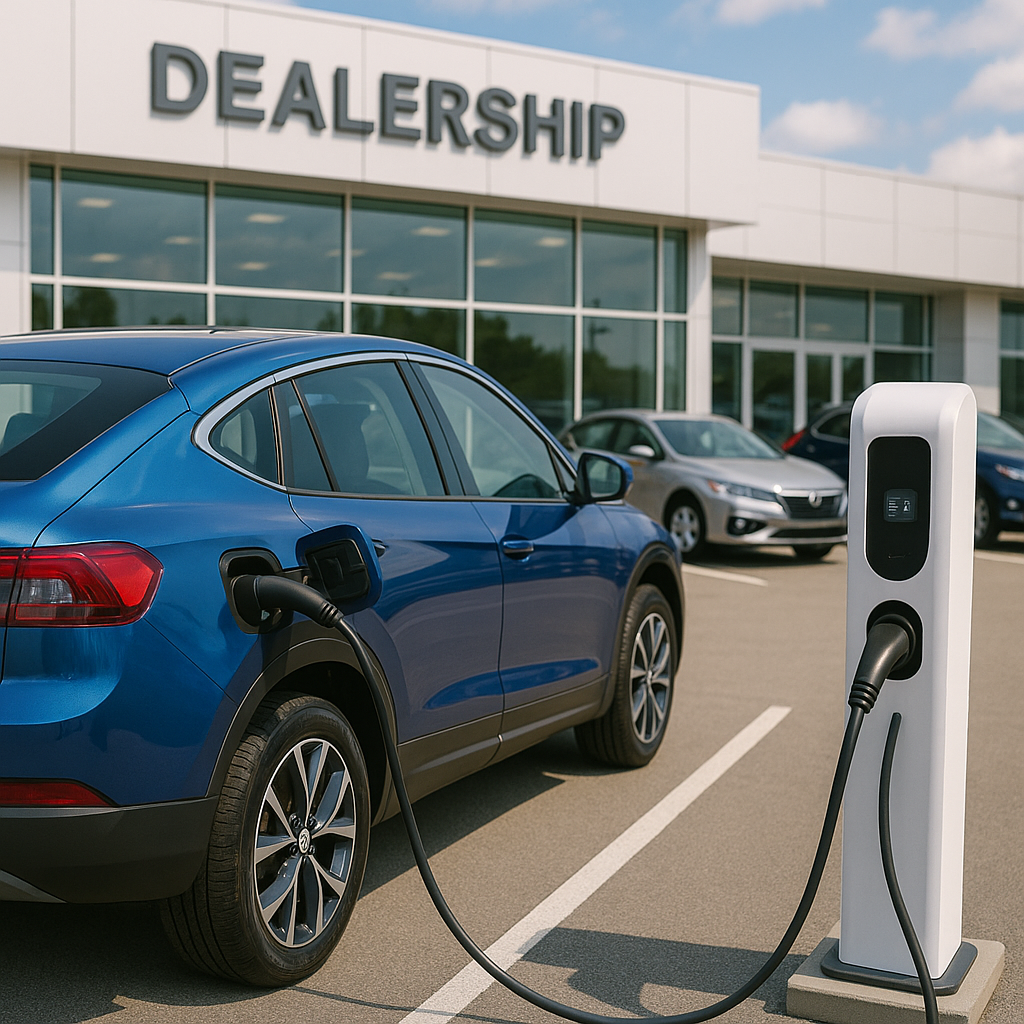Are Universities & Cities’ Infrastructure Built to Support The Rise of EVs?

Accounting for 20% of global CO₂ emissions, the transport sector is the second-largest carbon pollution contributor worldwide. Transport emissions have nearly tripled since 1970! But given the the daily necessity of travel for many people, the road to decarbonization is not in eliminating any single form of transport—rather, the key is making it more sustainable. One obvious answer? Electric vehicles (EVs). And at the core of an efficient and stable EV infrastructure lies a robust software solution to manage, optimize, and enhance the network foundation and user experience.
Electric vehicles play a key role in achieving climate neutrality and attaining a low-emission global economy via energy transition. However, according to a Juniper Research study, the lack of public infrastructure still proves a significant hindrance to adoption. By investing in EV infrastructure, widespread adoption becomes more practical—and where better to focus this effort than in the highest-traffic hubs: cities and universities?
As dense networks primed to receive private and public funding, cities and universities are in a pole position to lead on the EV transition. Here, we’ll take a look at some cities and universities that have already solidified their status as leaders in EV infrastructure adoption. We’ll uncover implementation strategies and how public and private sector entities can get on board to reach the same carbon neutrality goals.

The State of EV Infrastructure
According to respondents in one Exro poll, EV charging infrastructure is seen as the main barrier (47.7%) to EV adoption. Respondents voted availability or affordability as the second highest barrier at 34.2%.
Beyond the range anxiety of making it to the next charging station before it’s too late, EV drivers face other challenges when it comes to suitable EV infrastructure. Research finds that around 20% of California’s EV owners switch back to internal combustion engine (ICE) vehicles due to EV charging infrastructure dissatisfaction. Obstacles include:
- Charger accessibility
- Charging speed and cost
- Charging design variances by vehicle
However, the Infrastructure Investment and Jobs Act (IIJA) of 2021 seeks to alleviate some of these difficulties, providing federal funding for EVs and charging infrastructure. Municipalities can access these funds through existing federal and state programs, as well as the National Electric Vehicle Infrastructure Formula Program and Charging and Fueling Infrastructure Grant Program.
Adopting EV infrastructure on university campuses and in cities can prove beneficial for all stakeholders. With reduced emissions, the electrification of transportation improves air quality, reduces noise pollution, and enhances energy independence. Moreover, cities and universities can position themselves as frontrunners in sustainable mobility, attracting investments and advancing innovation in the EV landscape.
But to increase the chances of securing federal funds for EV infrastructure, municipalities and universities need to research and plan accordingly. This requires investments in charging hardware, robust custom software solutions, and fleets. A development partner knowledgeable about EV ecosystems and custom software solutions can assist in streamlining and successfully executing these projects.
While widespread EV infrastructure accessibility still has a far way to go, there are a few cities and universities breaking ground with successful infrastructure implementation.
Cities Leading the Way: Successful EV Infrastructure Implementation
Californian cities make up seven of the top 10 most EV-friendly cities in the US; with 293,000 EV vehicles on the road, the Los Angeles metro area tops the national list. Unsurprisingly, it also has the most charging stations (around 4,800).
For instance, the approval of Perla on Broadway—a $350 million skyscraper in downtown LA—hinged on the developer's willingness to quadruple the number of originally-proposed EV charging stations on site. Today, the developers express how glad they are that the planning commissioner forced them to install these 90 chargers, as they have become a significant factor in selling units.
The Atlanta suburb of Peachtree Corners is another model community for a proactive, long-term electrification strategy. The evolving community charging program offers residents and businesses special offers from EV charging providers, encouraging private and community contributions to EV infrastructure development.
Although US legislation makes funds available for EV infrastructure deployment, these funds don’t cover everything. Thus, municipal-level public–private partnerships are key in providing upgrades and operating charging systems.
Universities as EV Champions: Incorporating EV Infrastructure on Campus
Universities often function as miniature communities themselves—and as such, also push the lead on EV infrastructure. Consider SUNY University at Buffalo’s “10 in 10” initiative. Launched in 2020, the initiative mapped out 10 steps for UB to take over 10 years to reach carbon neutrality goals by the end of the decade. One of these steps is electrifying mobility across the university.
Besides working to electrify its own fleet, UB aims to make it easier for commuters to choose EVs by providing EV charging infrastructure on campus. The university implemented an EV charging pilot program in 2013, before the “10 in 10” initiative. In the years since, the number of electric vehicles on campus has increased significantly. This resulted in 33 more charger installations in 2021. Since then, monthly EV drivers commuting to UB further increased by 206%.
To handle such rapid growth, it was essential to develop an EV charging policy. This included vehicle permitting policies, charging rates, plug-in limits, and payment options. To allow more vehicles to use the stations, rates increase after three hours—a financial incentive to prevent hogging charging stations.
To take advantage of lower nighttime rates, the university is launching a battery storage pilot program.
The University of Michigan is also making great strides in EV infrastructure deployment. The Ann Arbor campus plans to install 400 EV charging spaces over the next four years, with the first phase (installation of 100 chargers) slated for completion by the end of 2024.
Staff, students, and visitors with applicable parking permits can use the stations during enforcement hours; chargers will be open for public use outside of these hours. As with UB’s policy, the fee structure also includes an overstay fee to encourage drivers to continue onward as soon as they have adequate charge.

Custom Software Development for Seamless EV Integration and Adoption
Cities and universities have the opportunity to pave the way for EV infrastructure development, but not without challenges. For example, thousands of electric vehicles tapping into the electrical grid for regular recharging can place severe strain on the system—especially when many cars charge simultaneously. As a result, grid operators may experience voltage drops, power outages, and other reliability issues.
As a related concern, there currently is no standard charging operation. Chargers differ between operators—and so does the attendant software. In addition, many operators impose restrictions on their accessibility and use.
While these challenges are serious, they are also manageable. The problem is not so much the limited energy grid or the present electric vehicle popularity—it’s seamlessly integrating disparate systems into a sustainable, standardized solution.
Software solutions play a critical role in connecting fundamental parts and role players in the entire EV ecosystem. To achieve city-level EV infrastructure collaboration, it’s important to work with a company that integrates multi-vendor accessibility. This enables interoperability, better overall value, and ensures EV infrastructure remains future-proof.
Maximizing EV Infrastructure With Intelligent Solutions
That’s where experts like S44 come in. S44 solutions help cities and universities establish EV infrastructures to facilitate increased EV adoption. We bridge the gaps in your EV infrastructure, designing and implementing custom software that helps cities and universities optimize their charging network and encourage EV adoption.
Our load management software entails intelligent features such as data-backed charging algorithms and load forecasting. Furthermore, dynamic demand response matches supply and demand to decrease energy strain when supply is scarce, stabilizing the grid.
S44 solutions additionally improve interoperability, encouraging a multi-stakeholder approach to meet the demands of public charging stations. This allows EV drivers to make use of any charging station regardless of the network provider. An industry-standard Open Charge Point Interface (OCPI) eliminates the complication of various networks, ensuring all charging stations are accessible.
Software That Revolutionizes eMobility
Insufficient EV infrastructure and incompatible systems are significant roadblocks in the adoption of electronic vehicles. But cities and universities can drive the adoption of clean energy commuting by partnering with public officials, developers, and experts like S44.
From planning and design stages through deployment, S44 develops user-centered software solutions to revolutionize the automotive, mobility, and energy industries. The goal? Increasing efficiency, reducing costs, improving reliability and safety, and optimizing energy usage. Together, we’ll build a solution that makes your EV infrastructure a shining example for the eMobility transition.
Get in touch to discover how you can streamline your EV ecosystem and deliver optimized digital experiences through custom software.







